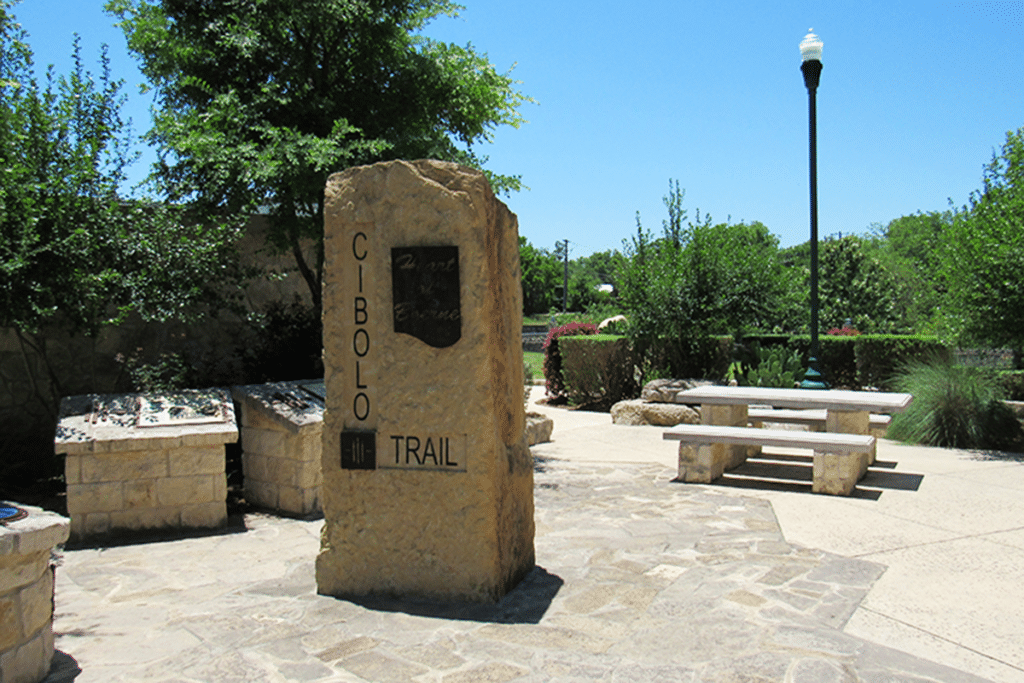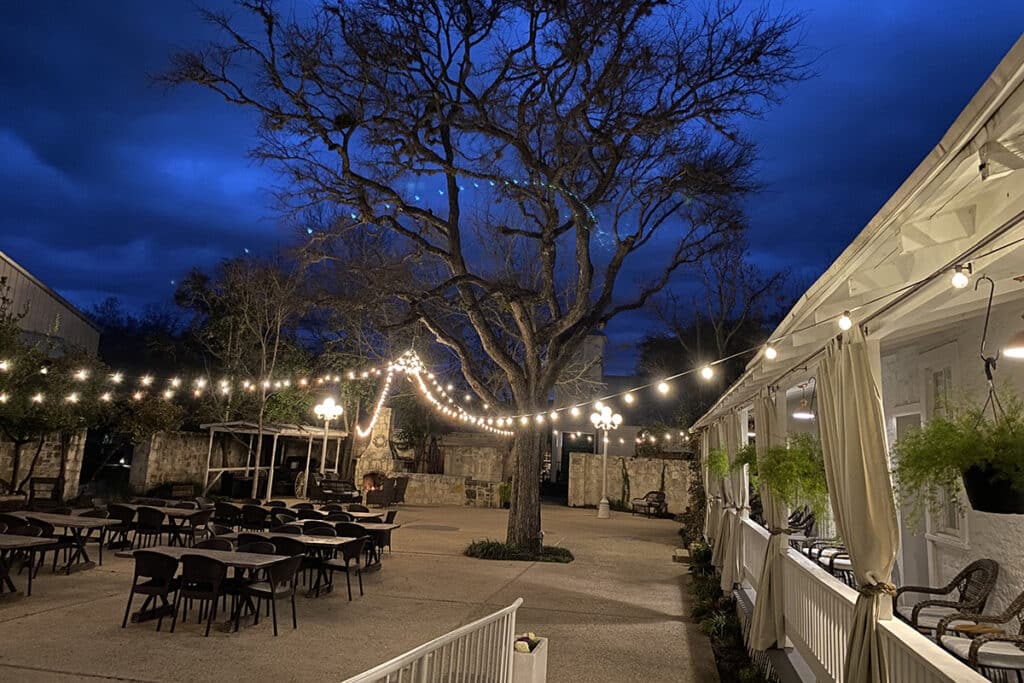When Christopher Moroney heard Near Eastern music for the first time, he was only 17 but he had a flash of insight. This, he thought, may be more like the music that existed in Jesus’ time than anything else we have heard in the West. Many years had to pass before the San Antonio musician could return to that early thought, but return he did, in a big way. As artistic director of the nationally recognized San Antonio Vocal Arts Ensemble (SAVAE), the Massachusetts native and his wife, Covita, have spent the past several years trying to recreate the music of 2000 years ago. Their efforts eventually culminated in the release of “Ancient Echoes,” a unique recording of Jewish and Christian sacred songs as they might have been sung in Palestine in the first century.
“For us, as well as for everyone else in the group, this was a spiritual journey,” says Christopher. “We talked a lot about what we were doing. When we sing, we try to convey the deeper meaning of these spiritual songs. But as the title says, these are only echoes of old music. There is no way to really know what that music sounded like.” True, but listeners seem more than happy to have the Moroneys’ beautifully crafted interpretation. The response from scholars, reviewers and music lovers alike has been a mixture of awe and enthusiasm. The Atlanta Journal-Constitution described the music as “nourishing to the body and soul,” while the Austin Chronicle wrote, “Miracles happen and this music proves it.”
With its reputation steadily growing, the seven-member ensemble is frequently invited to appear in museums, churches, synagogues and concert halls across the United States, and this spring it will also perform in Santa Cruz, Bolivia. What’s more, some university professors are already incorporating SAVAE’s work into the courses they teach. The Moroneys’ journey into the past, however, has not been an easy one. It started in earnest four years ago when a friend presented the couple with the book “Prayers of the Cosmos” by Neil Douglas-Klotz. “We discovered prayers and sayings of Jesus in a new translation from the Aramaic,” recalls Christopher. “Most translations so far have been from Greek, but Jesus spoke Aramaic, not Greek. What was interesting, this translator was going deeper into the meaning of words, revealing a depth to these prayers I had not been aware of before.” The husband-and-wife team thought the book’s prayers could be set to music, but the question was what music? They knew of no ancient music manuscripts. Moreover, they spoke no ancient languages.
What followed was an intense learning period during which the Moroneys immersed themselves in the culture of the Holy Land in multiple ways. They joined the local tri-faith organization of Christians, Muslims and Jews, learned an old Babylonian dialect that helped them with the study of Aramaic and Hebrew, researched more recent musical traditions of the region and taught themselves to play Near Eastern instruments still in use today in Arab nations.
But it wasn’t enough. They still didn’t have anything resembling a score. The breakthrough finally came when they met Mark Dunn, an editor at a Jewish publishing house, whose private library contained a historical treasure: the out-of-print works of early 20th-century Jewish musicologist Abraham Idelsohn. In a pioneering effort of unprecedented scope, Idelsohn collected and wrote down the tunes of various Jewish groups that had been separated from one another for centuries. Since many had similar melodies and traditions, the musicologist concluded that they had carried these tunes with them since their ancestors left Palestine after the destruction of the Second Jerusalem Temple in A.D. 70. For the Moroneys, that was the turning point. Now they had something to go on musically. “It took us two years before we could put together the first song,” says Christopher. “We had to learn everything, how to hold the tongue and how the throat should be configured, and how to play the instruments . . . It was a bunch of detailed work. Then we had to pass it on to the rest of the group.”
“Ancient Echoes” features a couple of songs taken directly from Idelsohn’s opus, plus Christopher Moroney’s original compositions based on old Hebrew musical motifs, which the meticulous Idelsohn had recorded and classified. All the singing is in the original ancient languages.
“What they have accomplished is something no one else has done,” says Temple Beth-El cantor David Van Abbema. “Jewish music before 1000 A.D. has been a mystery. By studying all the sources they did, they have put this puzzle together. The accomplishment is monumental.” Abbema feels the “Echoes” come close to the real thing. “The oldest music I know is that of the Yemenite Jews, who have lived in isolation from other Jews since 400 B.C.,” he explains. “From what we can glimpse from them, SAVAE’s rhythms and melodies make sense musically.” This isn’t the first time, however, the Moroneys have ventured into the past to bring forgotten music back to life. Early music has fascinated them for a long time.
Raised as Catholics, both Covita and Christopher describe themselves today as “very spiritual” but not affiliated with any particular denomination. They met in a ninth-grade art class and married in 1977 at age 21. Although they loved music – Covita was a guitar major while Christopher studied piano, composition and arranging – the couple realized early on that making a living as musicians might be tough. Luckily, they had other talents. Christopher eventually built up a successful career as a children’s books illustrator, while Covita worked as the San Antonio Symphony’s marketing director for 10 years. But singing and music remained a big part of their lives. In 1989 the two founded SAVAE to perform the sacred repertoire of New Spain from the early colonial period. “It was (Mastersingers’ director) John Silantien who drew our attention to this music,” says Covita, the group’s manager. “When we started listening to it, what jumped at us was its rhythmic feel. It was a completely fresh approach to liturgical music, completely different from the European Renaissance fare. I would say, as different as Gregorian chants are from Elvis Presley. It simply captured our imagination” Composed between 1521 and 1600, the Latin colonial idiom may be described as the first fusion genre, she says. European chant and polyphony mix freely with indigenous Aztec sounds and the rhythms brought to the New World by African slaves.
What SAVAE never expected, though, is to make the Billboard charts. Following the release of their second Latin CD, “Guadalupe: Virgen de los Indios,” the choral group was featured on NPR’s Weekend Edition on Dec. 12, 1998. The segment generated a storm of calls from listeners wanting to buy the record. Other radio programs followed. Sales shot up nation-wide, propelling “Guadalupe” to No. 11 on Billboard’s world music chart.Today, the group’s CDs are sold on Amazon.com, at Borders and other outlets, although sellers seem to have trouble deciding where exactly to put them. A SAVAE CD may pop up in either the “classical,” “new age” or “world music” section, depending on who is doing the classifying. In San Antonio, you can also get the CDs at the San Antonio Museum of Art, the Institute of Texan Cultures, the Viva Book Store and from the Web site www.talkingtaco.com.
Besides the Moroneys, the ensemble’s current members are Kathy Mayer, Tanya Moczygemba, Jody Noblett, Lee P’Pool and Sonia Yamin. Each singer also plays several different instruments. So what’s next for the little chorus that could? Can they possibly go any further into the past? “We will stay with the first century for a while because of the huge effort we put into it and because there is still so much material there,” says Christopher. “Maybe we’ll explore further back in time or move forward to hit the Islamic era. We are still figuring it out. We’ll let the project come to us.”
By Jasmina Wellinghoff




